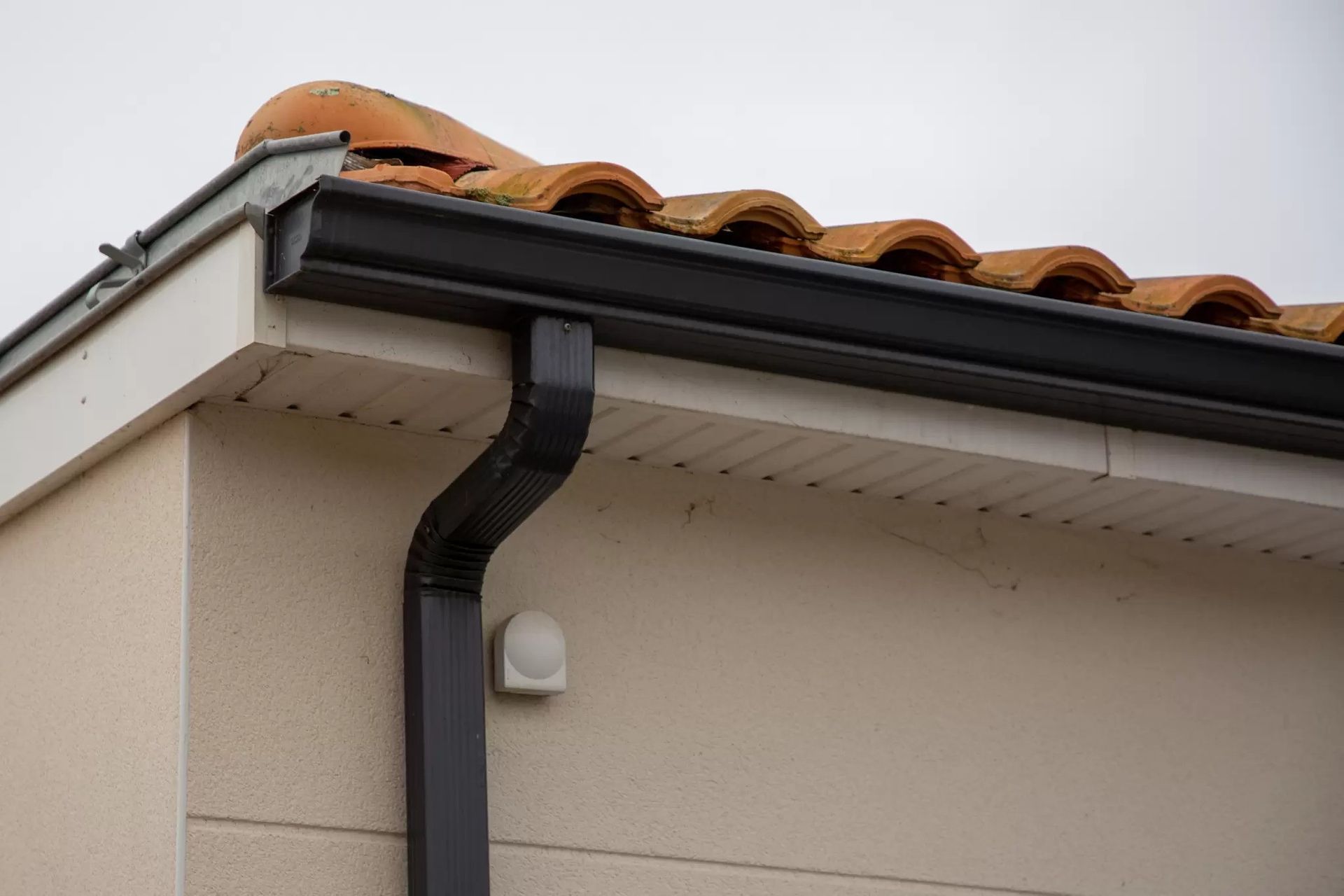What Is a Drip Edge on a Roof?
September 3, 2025
What Is a Drip Edge on a Roof? A Complete Homeowner’s Guide

When you think about your roof, it’s easy to focus on shingles, gutters, or maybe even skylights. But there’s one small yet important component that quietly protects your home every day. The drip edge, a metal strip installed along the edges of your roof designed to ensure that water flows away from vulnerable areas like the roof deck, fascia, and gutters.
When installed correctly by experienced contractors like the team at Riverside Roofing LLC, it prevents costly water damage while keeping your roofing materials and shingles in excellent condition.
Why Your Home Needs a Drip Edge
Although it may seem like a minor detail, a properly installed drip edge makes a huge difference in protecting the roof’s edges and the supporting fascia boards from rot and decay, because when rain or melting snow hits the roof and runs down the edges, it can easily seep behind the gutters and damage the underlying roof deck or underlayment if there is no metal protection guiding the water away, which is why every home should have drip edges installed by certified contractors like Riverside Roofing who follow local building code requirements and use premium roofing materials to ensure long-term durability.
How a Drip Edge Extends the Life of Your Roof
A drip edge works silently but effectively by creating a protective barrier that directs water safely into your gutters, keeping your roof’s underlayment, shingles, and fascia dry and protected, and while it might seem like a simple metal strip, it actually prevents wind-driven water from infiltrating vulnerable areas, helps maintain the structural integrity of the roof deck, and extends the overall lifespan of your roofing system, which is why Riverside Roofing always includes high-quality drip edges in every installation or replacement.
Protecting a Roof’s Fascia with Drip Installation
Your fascia boards are not just decorative. They support your gutters and shield your home’s exterior from moisture. Without a drip edge, water can collect behind the fascia, causing rot, mold, or paint damage, and over time, this can compromise the structural support for your entire roof. Riverside Roofing’s team installs drip edges carefully along the eaves and rake edges, securing them with corrosion-resistant nails to ensure that the edges remain flush and water flows correctly.
Preventing Water Damage with Proper Edges
Water damage is one of the most common and costly problems homeowners face, yet it is easily preventable with a proper drip edge. When water penetrates beneath shingles or the roof deck, it can ruin underlayment, rot the fascia, and even lead to mold or mildew growth in attics, and because these issues often go unnoticed until they are severe, installing a drip edge is a proactive way to protect your home. At Riverside Roofing, every installation includes drip edges that work seamlessly with gutters and other roofing materials to prevent hidden water damage and keep your roof performing at its best.
The Difference Between a Drip Edge and Roof Flashing
Many homeowners confuse drip edges with roof flashing, but they serve different purposes.
Roof Flashing
Roof flashing is typically installed around chimneys, skylights, or valleys to guide water away from vulnerable spots and prevent leaks in tricky areas.
Drip Edge
Riverside Roofing ensures that both flashing and drip edges are installed correctly, giving every home a complete protective system.
Choosing the Best Materials for a Roof Drip Edge
Not all drip edges are created equal.
- Aluminum: Lightweight, rust-resistant, and easy to install
- Steel: Strong, durable, and economical for most roofing projects
- Copper: Stylish, long-lasting, and visually appealing
At Riverside Roofing, we select the right materials for each home based on shingles, roofing materials, and environmental conditions, ensuring your roof’s edges are both functional and attractive.
Why a Strong Edge Matters in Roofing Systems
Your roofs are the first line of defense against wind, rain, and storms. Strong edges make the roofs more resilient. By installing a properly secured drip edge, Riverside Roofing ensures that your home’s roofing system stays intact for decades, keeping both your home and your investment safe.
How a Drip Edge Works with Gutters
A drip edge doesn’t work alone! It complements your gutters perfectly. By directing water straight into the gutter system, it protects the fascia, eaves, and roof deck from water damage while preventing foundation erosion. Riverside Roofing’s certified contractors make sure every installation ties drip edges and gutters together seamlessly, creating a continuous barrier against moisture.
Simple Guide to Drip Edge Installation
Step 1:
Prepare the Roof Edge
Inspect underlayment and shingles along the eaves to ensure a smooth surface.
Step 2:
Place the Drip Edge
At the roof eave, the drip edge sits beneath the underlayment, while at the rake edge, it goes over the underlayment to guide water properly.
Step 3:
Secure with Nails
Use corrosion-resistant nails spaced according to building code for maximum durability. Riverside Roofing guarantees each installation meets or exceeds local requirements.
Common Roofing Mistakes Without a Drip Edge
Skipping drip edges may save a few dollars initially, but it often leads to:
- Leaks in the roof deck
- Rot in fascia boards
- Curling or damaged shingles
Riverside Roofing always includes drip edges in new roofing projects, preventing these costly mistakes and giving homeowners long-term protection.
The Benefits of Adding Metal Along the Edge
Adding a metal drip edge strengthens the roofing system and prevents premature wear from moisture and wind. Riverside Roofing uses premium metal options that resist rust, complement your asphalt shingle or asphalt roofing, and enhance the roof’s overall appearance.
How a Drip Edge Protects Against Rot
When water penetrates the edges of a roof, it can lead to fascia rot and roof deck deterioration. But a properly installed drip edge prevents water from seeping under shingles protecting your roofing.. Riverside Roofing ensures every drip edge is secured and positioned to guard against these issues.
Do You Really Need a Drip Edge on Every Roof?
Absolutely. Modern building code requires drip edges on all new roofs, and even older homes benefit from retrofitting them. Riverside Roofing not only installs new drip edges, but also inspects existing edges for damage, ensuring that every roof is fully protected against water and structural issues.
Where to Place a Drip Edge for Maximum Protection
- Eaves: Beneath underlayment to direct water into gutters
- Rake edges: Over underlayment to prevent wind-driven leaks
Riverside Roofing’s team ensures every installation is precise so water flows exactly where it should, protecting shingles, fascia, and the roof deck from damage.
Extending Your Roof’s Life with Secure Edges
Drip edges prolong the life of shingles, underlayment, and other roofing materials by preventing moisture infiltration. Riverside Roofing uses high-quality drip edges, premium metal, and expert installation techniques to maximize the lifespan of your roof.
Why Contractors Always Recommend a Drip Edge
A licensed contractor knows the roof’s edges are weak points, and a proper drip edge is one of the simplest and most effective ways to prevent leaks. Riverside Roofing installs drip edges on every project to meet code requirements and keep your roofing materials in top condition.
The Role of a Drip Edge in Asphalt Shingle Roofs
For asphalt shingle roofs, a roof drip edge is essential to prevent water from slipping under shingles and damaging the underlayment or roof deck, and Riverside Roofing ensures precise placement and secure installation for every home we service.


